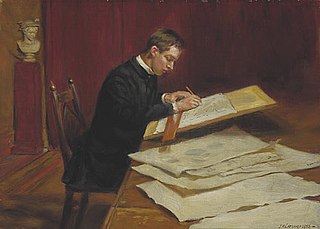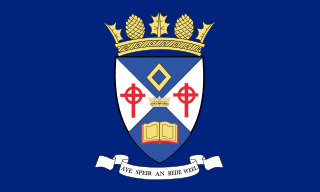
Fife is a council area, historic county, registration county and lieutenancy area of Scotland. It is situated between the Firth of Tay and the Firth of Forth, with inland boundaries with Perth and Kinross and Clackmannanshire. By custom it is widely held to have been one of the major Pictish kingdoms, known as Fib, and is still commonly known as the Kingdom of Fife within Scotland. A person from Fife is known as a Fifer. In older documents the county was very occasionally known by the anglicisation Fifeshire.

Methil is an eastern coastal town in Scotland. It was first recorded as "Methkil" in 1207, and belonged to the Bishop of St Andrews. Two Bronze Age cemeteries have been discovered which date the settlement as over 8,000 years old. Famous for its High Street having the most pubs per mile in Scotland, it was part of its own barony in 1614 and also part of the former burgh of Buckhaven and Methil. This burgh existed between 1891 and 1975. It is situated within a continuous urban area described as Levenmouth.

Pittenweem is a fishing village and civil parish in Fife, on the east coast of Scotland. At the 2001 census, it had a population of 1,747.

Pittenweem Priory was an Augustinian priory located in the village of Pittenweem, Fife, Scotland. Originally a Benedictine community founded from Reading Abbey in England and based on the Isle of May, it was relocated to Pittenweem by 1318, and placed under the control of the Augustinian canons regular of St Andrews Priory.

Anstruther is a small coastal resort town in Fife, Scotland, situated on the north-shore of the Firth of Forth and 9 mi (14 km) south-southeast of St Andrews. The town comprises two settlements, Anstruther Easter and Anstruther Wester, which are divided by a stream, the Dreel Burn. With a population of 3,500, it is the largest community on the Firth of Forth's north-shore coastline known as the East Neuk. To the east, it merges with the village of Cellardyke.
Saint Fillan was a Scottish Benedictine monk from the Isle of May Priory, founded in 1153 by King David I of Scotland.

Lower Largo or Seatown of Largo is a village in Fife, Scotland, situated on Largo Bay along the north side of the Firth of Forth. It is east of, and contiguous with, Lundin Links.

Carnbee is a village and rural parish in the inland part of the East Neuk of Fife, Scotland.

St Monans, sometimes spelt St Monance, is a village and parish in the East Neuk of Fife and is named after the legendary Saint Monan.

Gullane is a town on the southern shore of the Firth of Forth in East Lothian on the east coast of Scotland. There has been a church in the village since the ninth century. The ruins of the Old Church of St. Andrew built in the twelfth century can still be seen at the western entrance to the village; the church was abandoned after a series of sandstorms made it unusable, and Dirleton Parish Church took its place.

Sir Robert Stodart Lorimer, KBE was a prolific Scottish architect and furniture designer noted for his sensitive restorations of historic houses and castles, for new work in Scots Baronial and Gothic Revival styles, and for promotion of the Arts and Crafts movement.

Kellie Castle is a castle just outside Arncroach and below the dominant hill in the area, Kellie Law. it is about 4 kilometres north of Pittenweem in the East Neuk of Fife, Scotland.

Currie is a village on the outskirts of Edinburgh, Scotland, situated 7 miles south west of the city centre. Formerly within the County of Midlothian, it now falls within the jurisdiction of the City of Edinburgh Council. It is situated between Juniper Green to the northeast and Balerno to the southwest. It gives its name to a civil parish.

John Henry Lorimer was a Scottish painter who worked on portraits and genre scenes of everyday life.

Cellardyke is a village in the East Neuk of Fife, Scotland. The village is to the immediate east of Anstruther and is to the south of Kilrenny.

The Scottish Fisheries Museum is a museum in Anstruther, Fife, that records the history of the Scottish fishing industry and its people from earliest times to the present day.
Longforgan is a village and parish in the Carse of Gowrie, in Perth and Kinross, Scotland. It lies 5 miles west of Dundee on the main A90 road.

Oakley is a village in Fife, Scotland located at the mutual border of Carnock and Culross parishes, Fife, 5+1⁄2 miles west of Dunfermline on the A907.

Milltown of Rothiemay is a small inland village, built mostly of granite, in the north-east of Scotland and is within the Moray council area bordering neighbouring Aberdeenshire across the river to the south-east. Historically part of Banffshire, it is around six miles north of Huntly, and 8 miles east of Keith. It lies on the banks of the River Deveron, close to where it joins the River Isla. The village has existed for several centuries.

Kellie Lodge is a building in Pittenweem, Fife, Scotland. Located at 23 High Street, it is Category A listed.



















